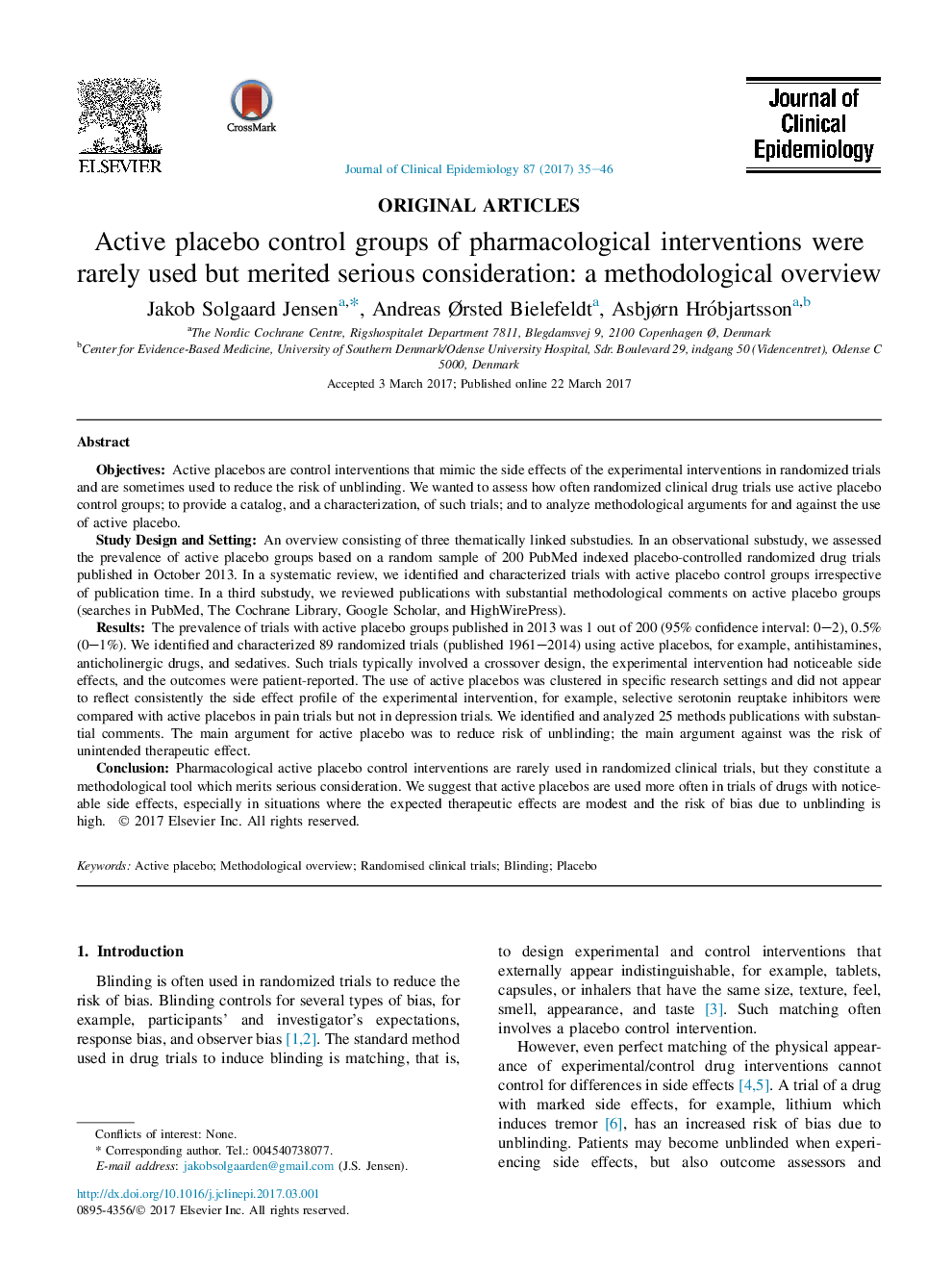| کد مقاله | کد نشریه | سال انتشار | مقاله انگلیسی | نسخه تمام متن |
|---|---|---|---|---|
| 5121981 | 1486839 | 2017 | 12 صفحه PDF | دانلود رایگان |
ObjectivesActive placebos are control interventions that mimic the side effects of the experimental interventions in randomized trials and are sometimes used to reduce the risk of unblinding. We wanted to assess how often randomized clinical drug trials use active placebo control groups; to provide a catalog, and a characterization, of such trials; and to analyze methodological arguments for and against the use of active placebo.Study Design and SettingAn overview consisting of three thematically linked substudies. In an observational substudy, we assessed the prevalence of active placebo groups based on a random sample of 200 PubMed indexed placebo-controlled randomized drug trials published in October 2013. In a systematic review, we identified and characterized trials with active placebo control groups irrespective of publication time. In a third substudy, we reviewed publications with substantial methodological comments on active placebo groups (searches in PubMed, The Cochrane Library, Google Scholar, and HighWirePress).ResultsThe prevalence of trials with active placebo groups published in 2013 was 1 out of 200 (95% confidence interval: 0-2), 0.5% (0-1%). We identified and characterized 89 randomized trials (published 1961-2014) using active placebos, for example, antihistamines, anticholinergic drugs, and sedatives. Such trials typically involved a crossover design, the experimental intervention had noticeable side effects, and the outcomes were patient-reported. The use of active placebos was clustered in specific research settings and did not appear to reflect consistently the side effect profile of the experimental intervention, for example, selective serotonin reuptake inhibitors were compared with active placebos in pain trials but not in depression trials. We identified and analyzed 25 methods publications with substantial comments. The main argument for active placebo was to reduce risk of unblinding; the main argument against was the risk of unintended therapeutic effect.ConclusionPharmacological active placebo control interventions are rarely used in randomized clinical trials, but they constitute a methodological tool which merits serious consideration. We suggest that active placebos are used more often in trials of drugs with noticeable side effects, especially in situations where the expected therapeutic effects are modest and the risk of bias due to unblinding is high.
Journal: Journal of Clinical Epidemiology - Volume 87, July 2017, Pages 35-46
